
With the opening of the East Branch of Shanghai Library in Pudong, there is more space for display and display of the archives that were originally stored in the warehouse.
Peng Mei News recently saw at the scene that the East Pavilion on the 7th floor has specially set up a "Collection Boutique Pavilion" to focus on the essence of some of the collections. Ancient engravings, movable type printing, and then to the modern way of cultural transmission under the change of technology such as lead printing and lithography. Important exhibits include "Vimalakirti Sutra" written in the first year of the Northern Wei Dynasty, the "Long and Short Sutras" in the Song Dynasty by Weng Tonghe, and "Xu Zhenren Jing Ming" by Song Tuo.
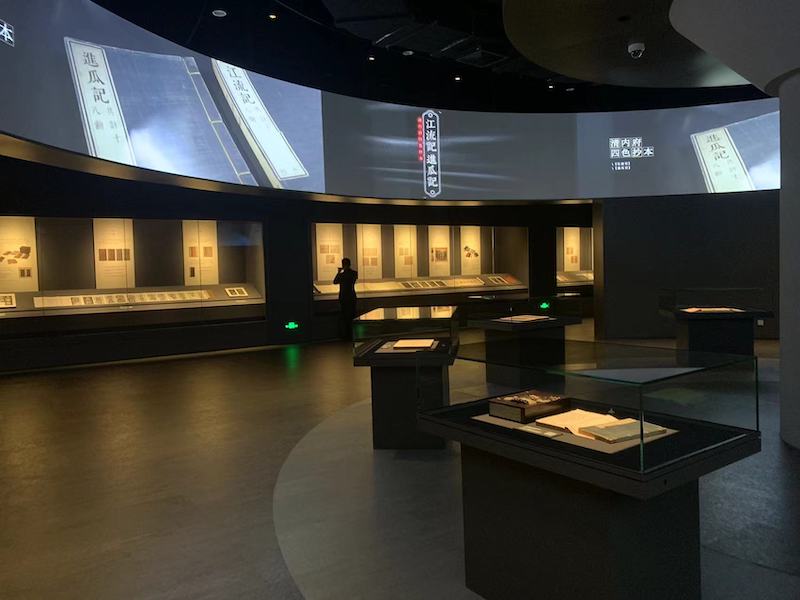
At the exhibition site, there are 8 individual showcases in the center of the exhibition hall surrounded by a circle
You especially remember that in November every year, the exhibition of historical documents from the collection launched by the Tu Exhibition Hall on Huaihai West Road, Shanghai, was limited to two weeks. People were immersed in the low-rise showcases and felt the ancient charm. .
It is reported that the Shanghai Library currently has more than 57 million volumes (pieces) of Chinese and foreign documents, including rare ancient books, inscriptions and tablets, local chronicles, rare books in Western languages, manuscripts of famous masters, and modern archives, books, newspapers and periodicals and other historical documents with special characteristics. , known in the world. For a long time, due to the limitations of the exhibition halls of Shanghai Library, many heavyweight rare ancient books, inscriptions, rulers and tablets in the above picture could not be displayed for a long time. With the opening of the East Hall in the picture above, this problem has also been completely resolved.

exhibition site
"Collection Boutique Museum" has a special fixed exhibition area, with the theme of "Collection of Books". The first exhibition is divided into eight parts: "ancient manuscripts, manuscripts and school manuscripts, rulers and letters, rubbings of inscriptions, rubbings of past dynasties, movable type collections, local chronicles, and modern heralds". A total of 70 collections are displayed, sorting out from the writing on the paper to the stone. Chuantuo, from ancient engraving, movable type printing, to modern technology such as lead printing and lithography, is the way of cultural transmission.
Eight volumes of classics gather the most in the collection, sort out the clues of writing and printing
In the exhibition, the most eye-catching is the 8 individual exhibition cabinets in the exhibition hall surrounded by a circle in the center, in which the exhibition of 8 volumes of classics is of great significance. Among them, the " Vimalakirti Sutra" written in the first year of the Northern Wei Dynasty (518) is a relic of Dunhuang and is the oldest collection in the picture above; Xu Zhenjing Ming is a representative work of Xu Xuan in seal script, and it was rubbed and mounted in the Northern Song Dynasty; the manuscript of "Yan's Household Ruled Slips" contains more than 700 celebrity handwritten notes, which outlines the circle of friends of "Qufu Sanyan"; the Qing Dynasty court The opera script "Jiangliu Ji" and "Jianglu Ji" are four-color manuscripts of Qianlong's inner palace, and they are exquisite; the Ming Hongzhi movable type printed version "Huitongguan Correction Sound Interpretation Book" is an earlier metal movable type version existing in China, which has become a printed version. It is an important testimony of history; the Qing Kangxi block-printed "Taiwan Fuzhi" was rescued from waste paper and was the first Taiwanese local chronicle; in 1855, the lithograph of Xuhui Public School (the predecessor of Xuhui Middle School) "French Characters" is a French textbook. It is also the earliest known all-lithographic book in Shanghai.

"Long and Short Classics" Song Edition
From the oldest existing paper manuscripts to lithographic books, the eight volumes of classics carry the changes of history and the culture of writing.
The "Vimalakirti Sutra" from the Dunhuang Sutra Cave is a representative of ancient manuscripts. What makes this scripture special is that its last line of inscription clearly states "Written by Zhang Fengluan on the 13th day of the seventh month of Wuxu" , that is to say, it was written in the first year of the turtle in the Northern Wei Dynasty ( 518), 1504 years ago.

Northern Wei copy of "Vimalakirti Sutra"
According to reports, the "Vimalakirti Sutra" is in volumes and stored in the upper volume. A total of 384 lines, 17 characters, divided into 19 sheets, the first part is missing. Before the Dunhuang Sutra Cave was discovered, there were few ancient manuscripts before the Song Dynasty, and among the Dunhuang scriptures, there were very few ancient manuscripts written in the fifth to sixth centuries and clearly signed. Because of its early age, this volume of "Vimalakirti Sutra" retains more of the characteristics of official script, so it also has a certain position in the history of calligraphy, and it is also of great value for the study of papermaking technology at that time.
Vimalakirti Sutra Changes is also a recurring theme in Dunhuang art. Vimalakirti is a layman in Buddhist legends, and the Buddhist allusion of "the goddess scattered flowers" in later generations comes from the "Vimalakirti Sutra".
If the Northern Wei manuscript "Vimalakirti Sutra" has a certain feeling of the writer, then the Qianlong Neifu four-color manuscript "Jiangliu Ji" and "Jiangua Ji" are the other extremes of the "script", which is neat and restrained. It is so beautiful that it would almost be considered a printed copy if it were not marked as "copies". Four colors are used, the name of the song is written in yellow, the text of Quwen (the lyric part of the opera) is written in ink, the character in Kebai (the action and narration of the opera character) is written in green, and the footnotes of the field steps are written in red. The front of the volume indicates the total duration of the performance "two hours and four quarters", and the inner seal is stamped with three Qianlong seals.
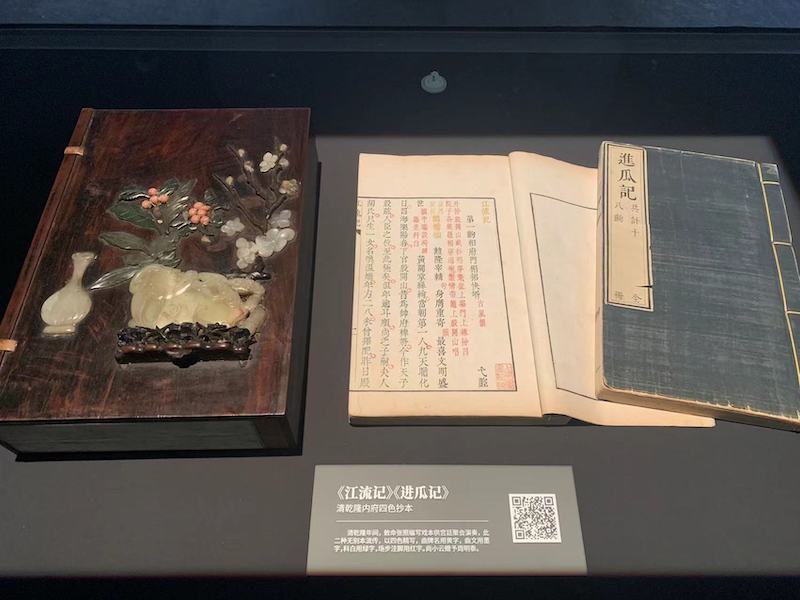
"Jiangliu Ji" and "Jianglu Ji" four-color manuscripts of Qianlong's inner palace in the Qing Dynasty
"Jiang Liu Ji" and "Journey into the Melon" are based on the stories of Tang monks taking scriptures, which can be described as the prequels of "Journey to the West". Around the period of the Republic of China, these two volumes were scattered from the Qing Palace and collected by Shang Xiaoyun, a famous Peking Opera artist. Shang Xiaoyun gave them to Zhou Mingtai, a bibliophile known for collecting opera documents, and attached a letter. Zhou Mingtai put the two volumes of ancient books and letters from the monk Xiaoyun in the letter. In 1949, Zhou Mingtai donated his collection of opera literature and classics to the Shanghai Private Hezhong Library. After that, the Hezhong Library was merged into the Shanghai Library. This book is preserved in the picture above.
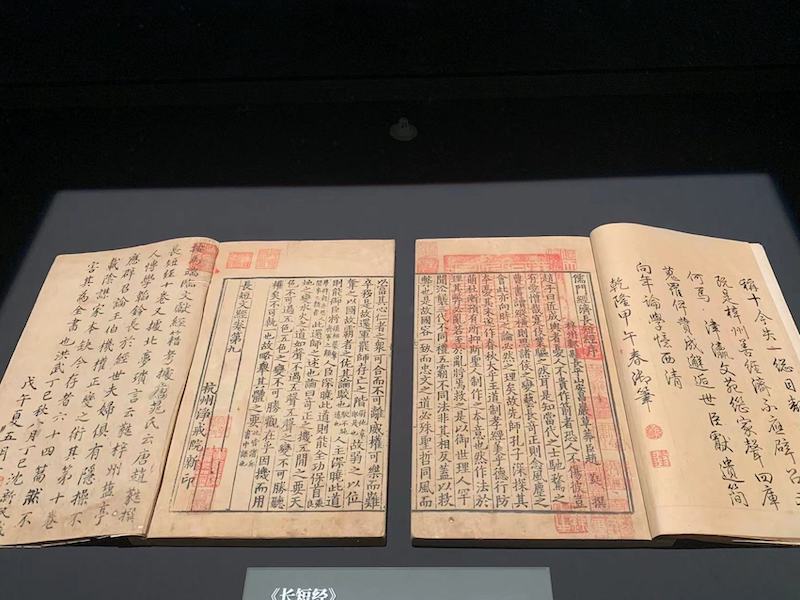
"Long and Short Classics" Song Edition
The "Long and Short Classics" and "Xu Zhenren Jing Ming" in the eight books are from the Song Dynasty, and they are all isolated copies. "Xu Zhen Jing Ming" is Xu Xuan's representative work in seal script. Xu Xuan was as famous as Han Xizai in his early years and was called "Han Xu" in Jiangdong. In addition, he worked in calligraphy, liked Li Si Xiaozhuan, and refined philology. He was especially good at seal script and Xun script. Together with his younger brother Xu Kai, they are collectively known as "Jiangdong Erxu", and "Xu Zhenren Jingming" is included in Xu Xuan's "Civilian Collection".
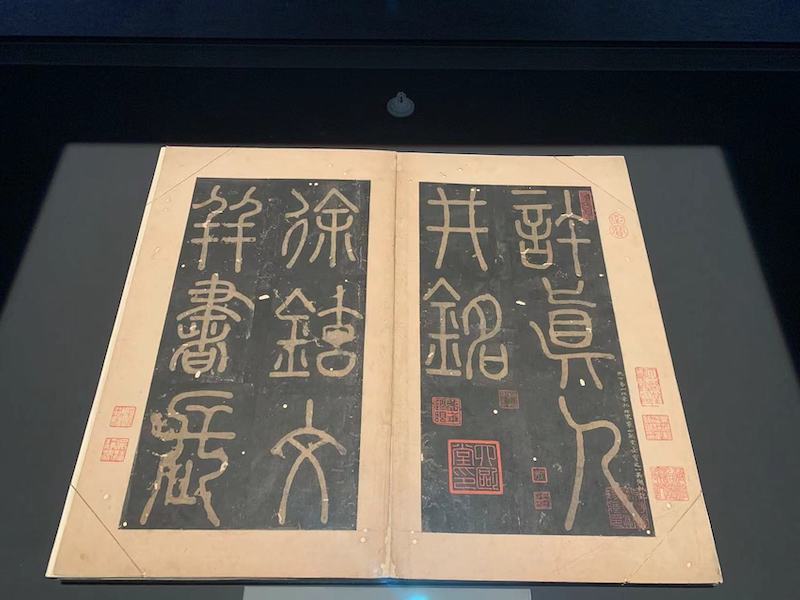
Song Tuo in "The Ming of Xu Zhenren"
The so-called "Well Ming" is the inscription engraved on the well fence. The inscription was originally engraved on the well rail in the Yuchen Temple in Maoshan, Jurong, Jiangsu, and the original stone was destroyed after the Song Dynasty. The value of "Xu Zhenren Jing Ming" in the above picture is not only that it is a rare and only one among the Song rubbings, but also that its binding form still retains the mounting style of the Song Dynasty.
According to reports, there are 11 rubbings in total, with a height of 39.3 cm and a width of 22.7 cm. The inscription is 6 and a half open, the core of the post is 32 cm high and 16.6 cm wide. On the front page of the old rubbings, the old pages of the Song Dynasty are floating on the new bottom book, and are fixed by the middle seam and the silk threads at the four corners. This volume is covered with a blue cloth cover, and the nanmu panel is engraved with Zhao Zhiqian's regular script, which details the circulation process of the rubbing.
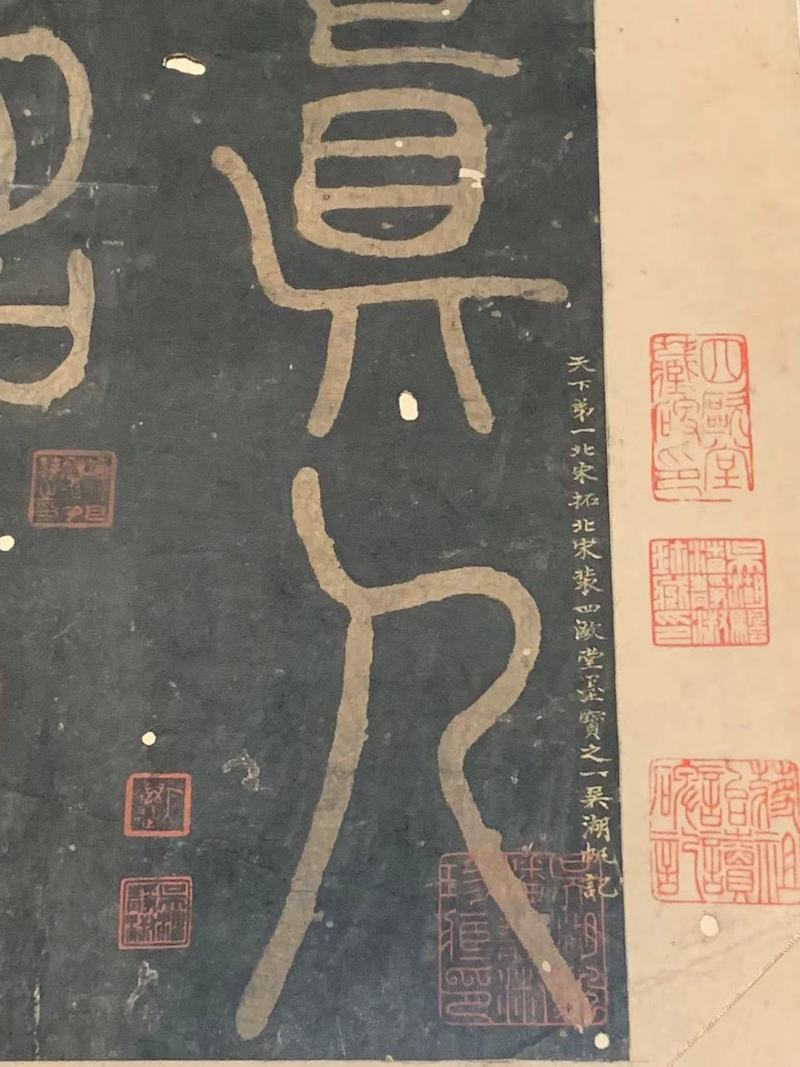
In "Xu Zhenren Jing Ming", Wu Hufan inscribed in small letters in mud and gold "the world's first Northern Song Dynasty Tuo Northern Song Dynasty costume, one of the four European halls of calligraphy"
On the expanded page of the rubbing, Wu Hufan inscribed in small letters in gilt ink, "the first in the world in Northern Song Dynasty Tuo Northern Song Dynasty, one of the four European halls of calligraphy" .
And at the end of the book there is a postscript: "The inscriptions on the steles of the Han, Tang and Song Dynasties stored in my family are the oldest in the early Northern Song Dynasty. It is not credible to see the manuscripts of the Tang Dynasty, and there is no such ancient"! It can be seen that after getting the rubbing, Wu Hufan couldn't hide his joy.
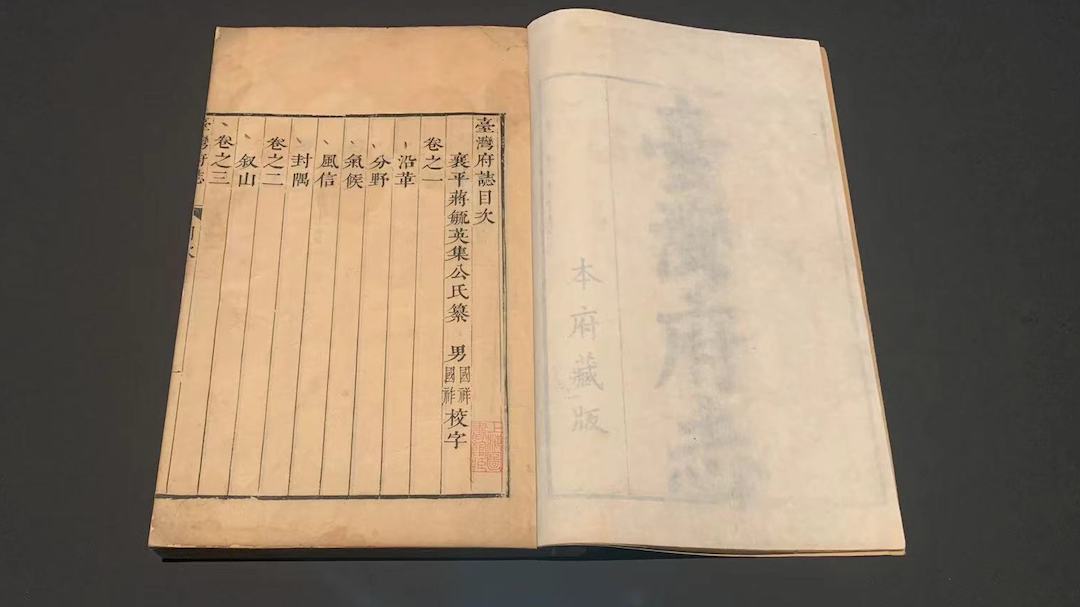
"Taiwan House Chronicles" edited and edited by Jiang Yuying
Another example is "Huitongguan Correction and Interpretation of Books" and "Flange Characters" which record the changes in printing methods and cultural exchanges. "Taiwan Fu Zhi" was rescued from waste paper in the 1950s, and it was not seen again until 1975 when the old paper was re-examined in the picture above. Before the discovery of this "Taiwan Fu Zhi" edited by Jiang Yuying, Chinese and foreign scholars believed that the "Taiwan Fu Zhi" compiled by Gao Gongqian in the 31st year of Emperor Kangxi was the earliest. The discovery in the above picture has changed the recognition of the academic community, and some of the materials have not been recorded in other chronicles, and have high historical value.
Xiao Yuan's elegant knowledge on paper
In addition to the eight exhibits in the center, there are still many cultural relics worthy of careful reading in the exhibition hall. For example, the "Writing Between Papers" section at the entrance displays "Manuscripts of Wen Zhengming's Poems", although only one page is opened, it shows that its calligraphy is fluent. At present, there are a total of seven volumes of the Tibetan text of Zhengming's poems above. According to the postscript of Wen Zhengming VI Sun Wenhan in the ninth year of Emperor Qianlong's reign (1744) in the Qing Dynasty, three manuscripts were written between Ding You (1537) in the sixteenth year of Jiajing and Jihai (1539) in the eighteenth year, that is, Wen Zhengming's 69th to 70th years. At the age of three; the last four volumes of poetry manuscripts have the six characters "Jiayin, Jimao, Bingchen" written by Wen Zhengming, that is, the thirty-three years (1554) to thirty-five years (1556) of Jiajing, Wen Zhengming 85 to the age of 87.

"Wen Zhengming Poems"
According to Wen Zhenmeng, Wen Zhengming's great-grandson, Wen Zhengming "was very rich in poems and manuscripts in his life", but in his later years. Collectors who like his calligraphy often buy Wen Zhengming's manuscripts by bribing the servants of the writers, and the handed down "can't match one percent", which shows the preciousness of the seven volumes of poems collected in the later years.
Another heavyweight exhibit is the water-front rubbing of "Inscription of the Crane". The Ming He Ming was originally engraved on a cliff at the west foot of Jiaoshan Mountain, Zhenjiang, Jiangsu. In the Song Dynasty, it was struck by lightning and collapsed into the Yangtze River, and the stone was broken into five pieces. In the Northern Song Dynasty, the water receded and began to appear. In the winter of the 51st year of Emperor Kangxi of the Qing Dynasty (1712), Chen Pengnian, the former prefect of Suzhou, recruited workers to move it to the mountain, and then built it into the wall of Dinghui Temple in Jiaoshan. The existing Jiaoshan remnant stone is five pieces and ninety-three characters. The so-called Shuiqian rubbing refers to the rubbing before Kangxi fifty-one years. According to reports, the traditional identification method of the Shuiqian rubbing is: the first line of the middle and upper stone "attempted Wuxiang", the "sui" character is still alive, and the second horizontal stroke of the "wu" character and the "mouth" part can be seen . The word "xiang" can be seen in "sheep", click on the right.
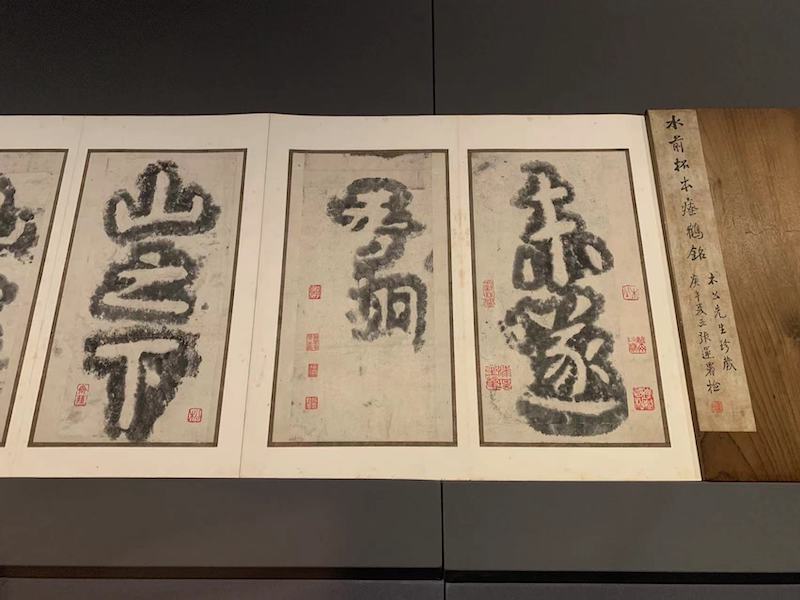
Waterfront rubbing of "Inscription of the Crane"
There are different debates on the age of "Tan He Ming" and the author's predecessors. Song Su Shunqin said in a poem: "The Goose Sutra is not seen in Shanyin, but the Ming He Ming was handed down from Beijing." It is believed that it was written by Wang Xizhi of the Eastern Jin Dynasty. Huang Bosi, a famous Jinshi family in the Song Dynasty, was the book of Liang Tao Hongjing, and scholars in the Ming and Qing Dynasties mostly said it from Huang Bosi.

Waterfront rubbing of "Inscription of the Crane"
The font of "Tan He Ming" is thick and ancient, and Xiao Shu is light and distant. The original text is the cliff calligraphy stone, so the density of its lines, the number of words, and the size are not the same, and it is staggered and interesting. There is a strong atmosphere of the Six Dynasties between the lines. The calligraphy of "Tan He Ming" has a great influence on later generations, and it is the style of regular script since the Sui and Tang dynasties. Huang Tingjian's calligraphy is very powerful, and he believes that "the big characters are no better than "Tan He Ming". In addition, the Palace Museum in Beijing has the Song Tuoyang stone copy, which is a fine rubbing copy before falling into the water.
In addition to reading the rubbings themselves, reading the inscriptions and poems of later generations is also a kind of knowledge. For example, the Song rubbing "Jiayou Shijing" in the above picture, after the volume, there is "Ding Si Xia Yu's two-body stone scriptures in the Northern Song Dynasty. Two-body Stone Classic" is another name for "Jiayou Stone Classic", because it is written in two-body script and true. In the postscript of He Shaoji's Mid-Autumn Festival in the seventh year of Xianfeng (1857), the "Jiayou Shijing" is compared with Wang Xizhi's "Lanting Preface" (Zhaoling Lan paper) and "Kaicheng Shijing". A review of calligraphy.
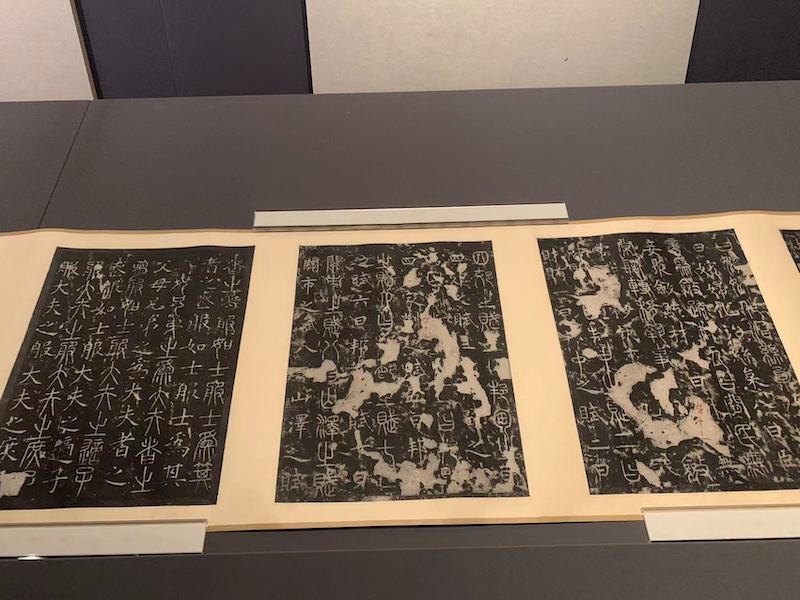
The above picture is a collection of Song rubbings "Jiayou Shijing"
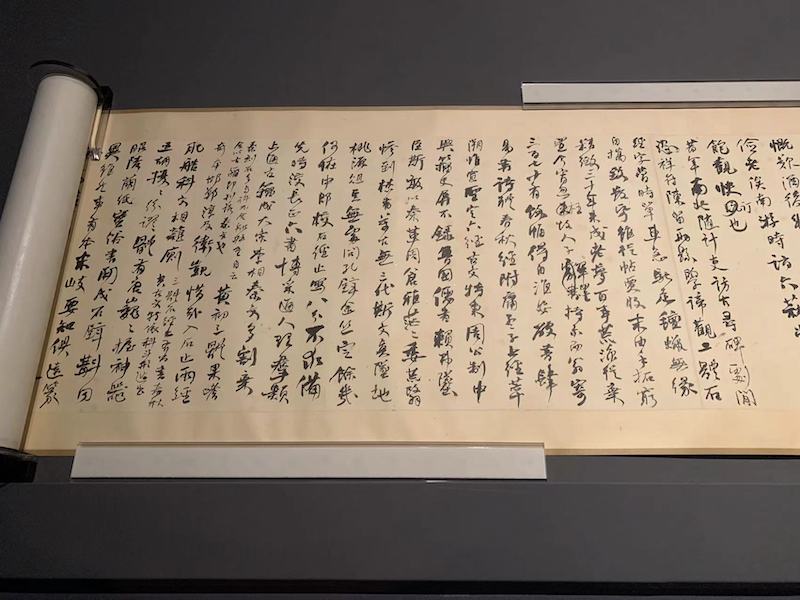
After the "Jiayou Shijing", He Shaoji's inscription
In the first exhibition, you can also see a number of Song edition books from different regions. Song people tended to focus on stable and solemn italics, so several calligraphers of the Tang Dynasty who were already very influential at that time were widely respected, and the calligraphy of Ouyang Xun, Liu Gongquan, Chu Suiliang and Yan Zhenqing was widely used. However, because of the different calligraphers respected, the style of calligraphy used is also different. Generally speaking, most of Zhejiang’s block-printed editions use European style, the characters are generally thin, the writing force is dangerous, and the mood is handsome; Fujian’s block-blocked editions are mostly of Liu style, with square font, strong bones and tight structure; Sichuan block-style script mostly advocates appearance and style, and uses thick and thick pens. Clumsy, Jin Jian free and easy; Jiangxi area is both, absorbing the different characteristics of each region.
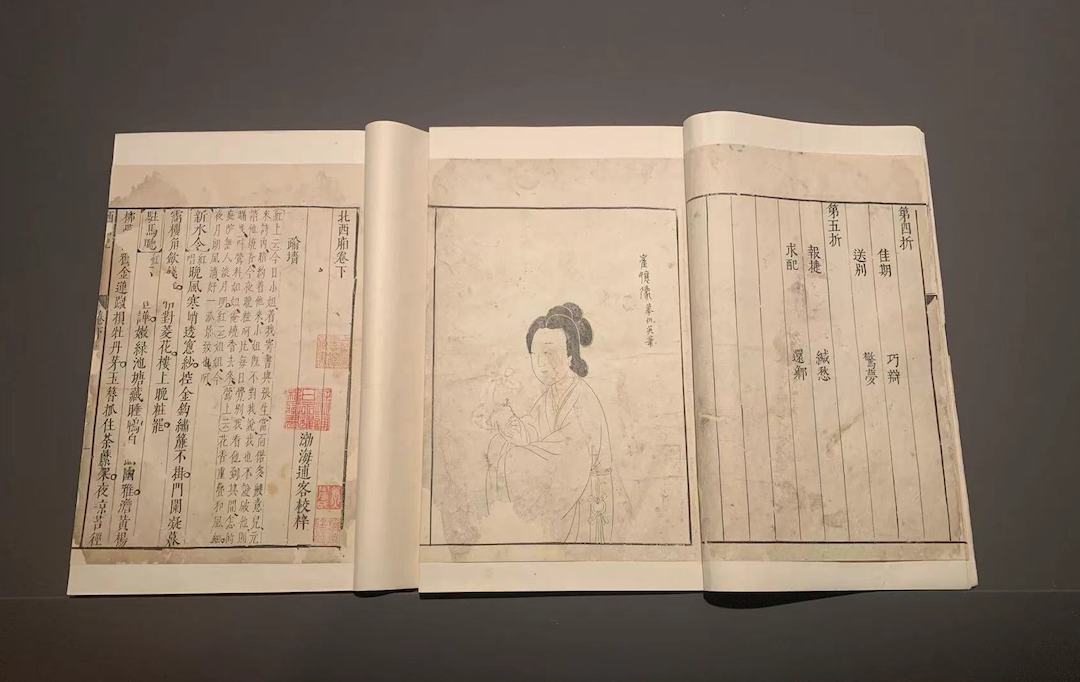
"The Story of the North West Chamber" He Bi engraved edition in the forty-fourth year of the Wanli reign of the Ming Dynasty (1616)
The exhibition also touches on themes that are popular with the public. For example, in the forty-fourth year of Wanli in the Ming Dynasty (1616), He Bi's "The Story of the North West Chamber", and displayed the portrait of Cui Yingying "in imitation of Qiu Ying's brush" on the front page; Chinese traditional color woodcut technique.
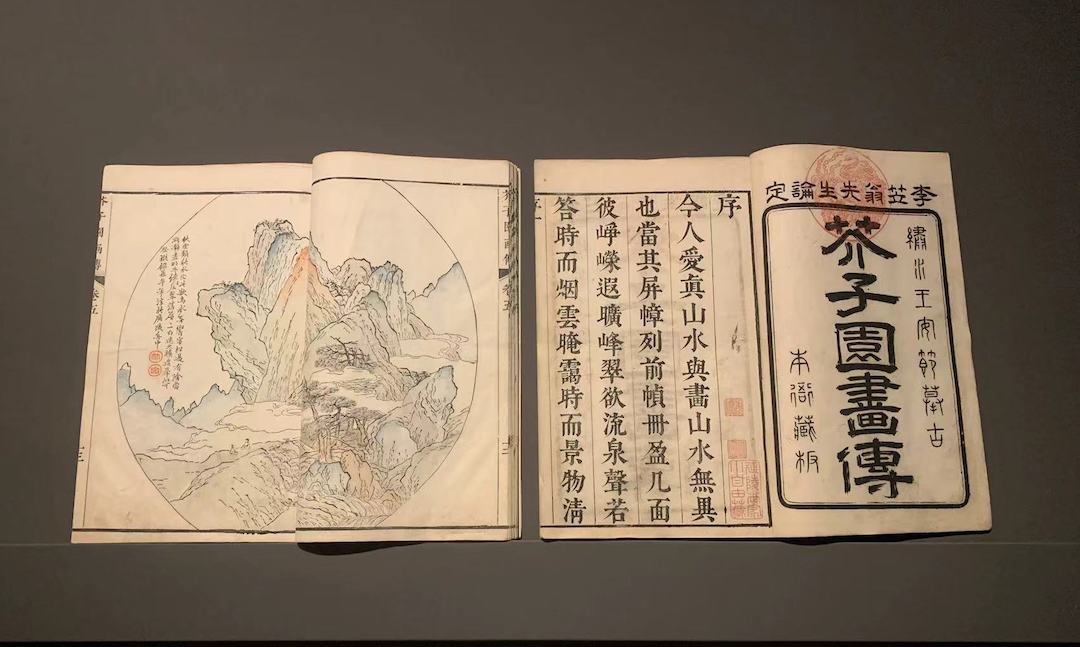
"The Biography of the Mustard Seed Garden" in the eighteenth year of Kangxi's reign in the Qing Dynasty
The first exhibition in the temporary exhibition area of the exhibition displays rare books from the old collection of Jinshan Yao, an important donor of books at the beginning of the establishment of the museum, in order to express high respect to the many donors represented by Mr. Yao Guang. In the future, more meaningful topics will be selected and rotated regularly.


